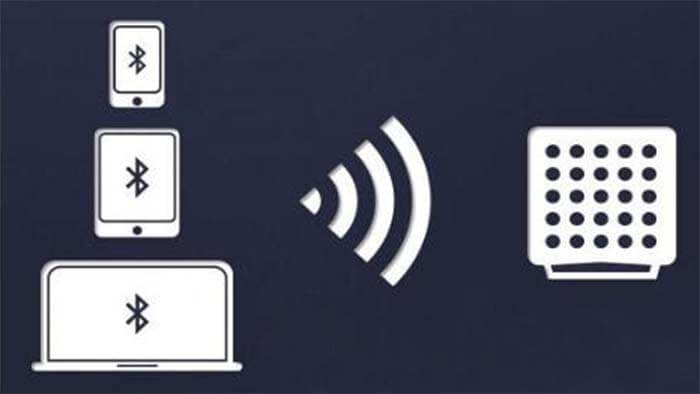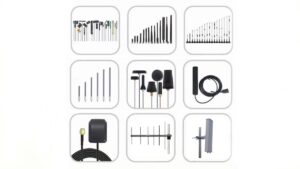What is the difference between the three wireless technologies of the WiFi Bluetooth Zigbee IoT wireless transmission technology?
WiFi Bluetooth ZigBee transmission distance, rate, power consumption
WiFi Bluetooth ZigBee application is different
Bluetooth applications: Communication, Cars, Multimedia, Industrial, Medical, Education, etc.
WiFi applications: Wireless Internet, PC, PDA.
ZigBee applications: Mainly suitable for automatic control and remote control, you can embed various devices.
The characteristics of the WIFI Bluetooth ZigBee
Bluetooth characteristics: With simple GFSK modulation, with extremely low operation and standby power consumption, use a button battery or even continuous work for several years.
WiFi characteristics: WiFi’s transmission speed is very fast, healthy, and safe WiFi product is small.
ZigBee characteristics: close distance, low complexity, self-organizing, low power consumption, low data rate, low cost.
ZigBee’s advantage:
Small transmission range
Under the premise of not using the power amplifier, the effective transmission range of the ZigBee node is generally 10 ~ 75 m, which can only cover ordinary families and office locations.
The data transfer rate is low
There is only 250 kb / s in the frequency band of 2.4 GHz, and this is only the rate at the link, removing the frame header, channel competition, response, and retransmission. The rate that can be used is less than 100 kb / s. And this consumption may also be divided into multiple applications adjacent to multiple nodes and the same node.
Delay is not easy to determine
Since ZigBee uses a random access MAC layer and does not support the channel access method of time-division multiplexing, some real-time services cannot be well supported, and due to sending conflicts and multi-hops, it is not easy to determine factors.
What is the choice of WiFi Bluetooth ZigBee IoT Wireless Transmission?
NB-IoT technology is still not mature, here is a simple comparison of three wireless communication technologies, including WiFi Bluetooth Zigbee technology to make wireless data transfer program development provides a suggestion.
First, the WiFi program of WiFi Bluetooth ZigBee technologies
The advantage of the WiFi program is that the technology is mature, the individual products can access public networks, and the cost is relatively low.
Disadvantages are that WiFi devices are generally consumed, in the field of the Internet of Things, the power supply is a problem;
The number of WiFi access is relatively limited, and a home router can generally only access dozens of devices;
The WiFi program has a large advantage in the primary stage of the Internet of Things, and the separate WiFi module can enter the network. The advantage is obvious, although the number of access is not much, on the Internet, the smart home has not been largely popular, Can meet most of the needs.
Therefore, the WiFi program is more suitable for Internet products that are not obvious to power consumption and do not deploy a lot.
For example, smart rice cookers, intelligent air conditioners, refrigerators, washing machines, and other traditional home appliance access networks.
Second, the Bluetooth program of WiFi Bluetooth technologies
The main advantage of the Bluetooth scheme is the ultra-low power consumption of the Bluetooth module, and the interaction of Bluetooth and mobile phones through the APP is relatively simple.
With the Bluetooth 5.0 module and more Bluetooth 5.0 products, the data transfer speed and coverage of Bluetooth technology, are more applicable to the requirements of the Internet of Things.
In the Bluetooth Mesh network, the Bluetooth Mesh networking standard is launched, and now there is a mature Bluetooth Mesh network scheme on the market.
Therefore, the Bluetooth scheme applies to Internet products that are required for power consumption and mobile phone can directly interact.
For example, smart door locks, intelligence, intelligent electric toothbrush, etc. also apply to large-scale Bluetooth MESH light control, and Bluetooth sensor network deployment.
Third, the ZigBee program of WiFi Bluetooth ZigBee technologies
At present, the node of most of the networks is to use the ZigBee web and then connects to the Internet via the gateway. The advantage is that the entire system is relatively good, and the technology is mature.
ZigBee can communicate with several nodes in theory, in theory, and can support 65,535 nodes, but it is measured that a gateway can only meet the nodes of about 100 to 200, but it can also fully meet the needs of the commercial Internet of Things.
The ZigBee can be satisfied in the environment where the battery is powered. The disadvantage is that separate ZigBee is unable to access public networks, which requires the gateway to achieve this need. Zigbee is applicable to products that may be deployed on a large scale and sensitive to power consumption.
Such as sensors, wireless switches, smart sockets, etc.
The above is a brief introduction and comparison of the three wireless transmission schemes of WiFi Bluetooth ZigBee.
The choice of the WiFi Bluetooth ZigBee IoT wireless transmission scheme
There is a big prerequisite for IoT equipment to low power, low power!
From the perspective of technical applications, these three wireless transmission schemes are not optimal, each with the most suitable application scenario. The Internet of Things has developed to this stage today, and the network environment is very complicated.
(1) If the power is strong, the power consumption of the Internet of Things is not sensitive, and the WiFi wireless program can be selected;
(2) If you need to interact with your mobile phone, the Bluetooth networking (such as Bluetooth Light Control Network, Sensor Network) can choose BLE low-power Bluetooth scheme;
(3) If you need to use a battery, you can choose the ZigBee scheme.
Besides The Difference Between WiFi Bluetooth ZigBee article, you may also be interested in the below articles.
PCB Antenna VS. External Antenna
Ceramic Antenna VS. PCB Antenna, A Comparison Guide
Wifi vs. 5G, is 5G better than Wifi?
Mobile Networks’ Evolution From 1G To 5G




